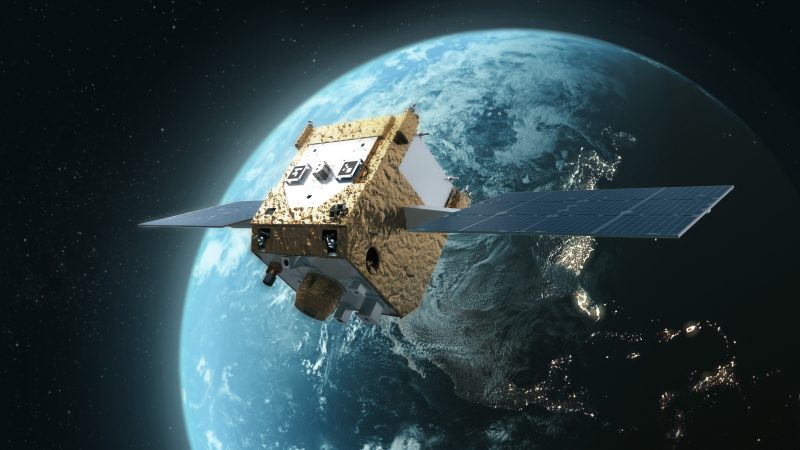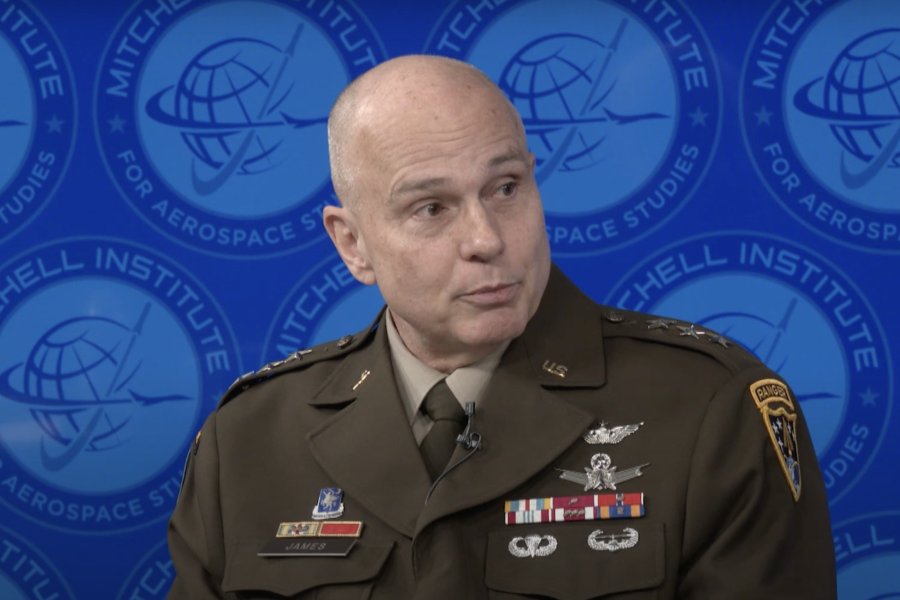U.S. Space Command is passionate about being able to maneuver satellites without having to worry about conserving fuel. But figuring out how to achieve that vision remains an open question, SPACECOM’s deputy commander said.
There’s no question that “dynamic space operations” can make space assets more effective, said Army Lt. Gen. Thomas L. James during a Schriever Spacepower interview with AFA’s Mitchell Institute for Aerospace Studies.
“We’ve done enough of the exercises, we’ve done enough of the training … and see what dynamic maneuver would do for us if we had it,” James said. “We see the advantages. I mean, it’s clear that’s there.”
James’ boss, SPACECOM commander Gen. Stephen N. Whiting, stated strongly his support for “on-orbit logistics and infrastructure” a year ago at the 2024 Space Symposium. Such capabilities would enable refueling by spacecraft equipped to do refueling and repair.
“Refueling has some disadvantages … because it’s a big fat target, depending on how you establish your refueling systems,” James said. Yet “our analysis that we’ve done on the SPACECOM side, and we’ve done a lot of this, kind of shows there’s a real case for the refueling.”
Yet the Space Force remains unconvinced. USSF is responsible for developing and acquiring space capabilities, while SPACECOM is the operational command responsible for combat in space.
Lt. Gen. Shawn Bratton, deputy chief of space operations for strategy, plans, programs and requirements, questioned the concept only days earlier: “I don’t know that I see the clear military advantage of refueling,” according to SpaceNews. And Chief of Space Operations Gen. B. Chance Saltzman told Congress last year that the Space Force was still weighing the benefits and cost of refueling.
At this year’s Space Symposium, industry and defense officials described plans for on-orbit demonstrations in 2026 and 2028. But foreshadowing Bratton’s comments, Lt. Gen. Philip A. Garrant told reporters he was waiting for the refueling “business case” to be proven.
One alternative to extending satellite life with additional fuel could be rapid satellite deployment. James acknowledged that May 8, saying: “If Gen. Bratton were here right now, he’d say ‘Or, I just give you more satellites rapidly, and that’s cheaper and easier for us to do than refueling.’”

Operationally speaking, SPACECOM sees a clear need move satellites around when needed, which is why SPACECOM and USSF’s SpaceWERX innovation shop plans to award 10 contracts worth $1.9 million each for small companies to demonstrate technologies in a “Sustained Space Maneuver Challenge.”
Alternatives to refueling are welcome, James noted.
“It is the idea of artificial intelligence, machine learning, data analytics on the systems,” James added, so that satellite maneuvers can be made more efficiently and burn less fuel to achieve the desired effect. Exploring different concepts and tech is within SPACECOM’s mission set, but buying and deploying new capabilities is part of the Space Force’s mandate.
“SPACECOM, we’re not in the acquisition or capability development business,” James said. “But we are certainly in the [business of generating] requirements, of understanding what our vision and view of orbital warfare is going to look like in the future, and what we have to have in place. … We are all ears for the best way to achieve whatever the effect is that we need to.”


